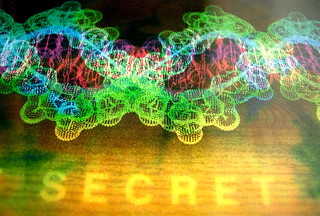
One such prediction comes from Imperial College London professor Armand Leroi. Leroi recently predicted that dating couples will soon be able to invoke the work of the HUman Genome Project to compare their DNA and see whether or not it’s compatible in terms of conceiving and raising a child. When the two strands of DNA are compared, the couples will be able to determine whether or not they’d like to proceed with both the relationship and the prospect of having a child; they can choose to opt out of they’re at risk of having a child with one of many genetic defects. The rapidly decreasing cost of DNA makes this possible within the next five or ten years, at most, according to Leroi.
It’s High-Tech, But is it Ethical?
There has always been a contentious attitude among most people when DNA is cited as a reason to either have a child or choose not to have one. Opponents of using genetics to determine whether childbirth is a viable option note that humans have never before been able to compare their DNA before choosing to conceive a child. They note that children born with Down Syndrome and other disorders have been able to function well in society, especially as society has learned how to best treat and accommodate those individuals in recent decades. They argue that genetic comparisons and mapping are both a “slippery slope” toward human beings who “play god” and eliminate any imperfections from the gene pool. They see a future where anyone less than perfect is eliminated, forgotten, or avoided.
That’s a pretty dramatic take on the entire situation, and Professor Leroi obviously disagrees with their assessment. So do many others. For his part, Leroi believes that the comparison between two individuals’ DNA will probably be used more as preparation for any disorders, rather than a clear avoidance of them. He also sees a future where people use the service’s affordable price as a way to look into their own genetic characteristics and strengths, perhaps alongside friends or family members who have endeavored to do the same.
Proponents of this genetic “matchmaking” when it comes to childbirth note that human beings have been “playing god” with childbirth and conception for quite a long time — even longer than the human genome has been mapped. They cite decades of records that show women getting abortions after their babies have been confirmed to have genetic abnormalities, citing those incidents as ones where humans have played god even without genetic mapping or DNA comparisons.
A Preview, Not a Blueprint, of Potential Children
Leroi emphasizes that seeking the genetic composition of each partner is only a way to see their compatibilities and mismatches, rather than a way to actually “design” the perfect child. Indeed, using genetics to perfectly design children and designate all of their features and temperaments is something that most scientists do view as unethical and, in many cases, impractical for the long-term.
Instead, Leroi sees a future where committed couples can be prepared for any genetic imperfections that their future child might have. He also believes the technology will be especially useful when couples are choosing to go the in vitro fertilization route when having a child. Using genetic blueprints will allow them to get a fuller picture of the host mother, allowing them to avoid any genetic issues that they themselves do not suffer from and would not otherwise encounter when having a child. Given the already extensive process of medical checkups and interviews required of in vitro mothers, Leroi sees this as a practical and ethical way to use this increasingly affordable DNA mapping technology.
Ethics is a Matter of Best Uses and Practices
Using this genetic mapping technology to discover any incompatibilities between the DNA of two committed partners is not, in itself, unethical, according to Leroi. Ethic challenges begin to occur when people begin “designing” their own children, and leveraging advanced genetic procedures to design the perfect human race. That eugenic trend is something the professor, and the majority of professional scientists, academics, and government regulators, all hope to avoid.
For now, Leroi merely hopes that falling DNA prices and advancing technology will help to outline genetic blueprints, highlight incompatibilities or potential pitfalls, and help future parents know what to expect of any children they might have. That’s a desire that’s seeming as old as time — or at least as old as the ultrasound and tests of the mother’s hormones during the early stages of pregnancy.
Image credit:
About the author: Jim Flick is blogger for a legal dna test firm, he explores the repercussions of genetic technology in society.
